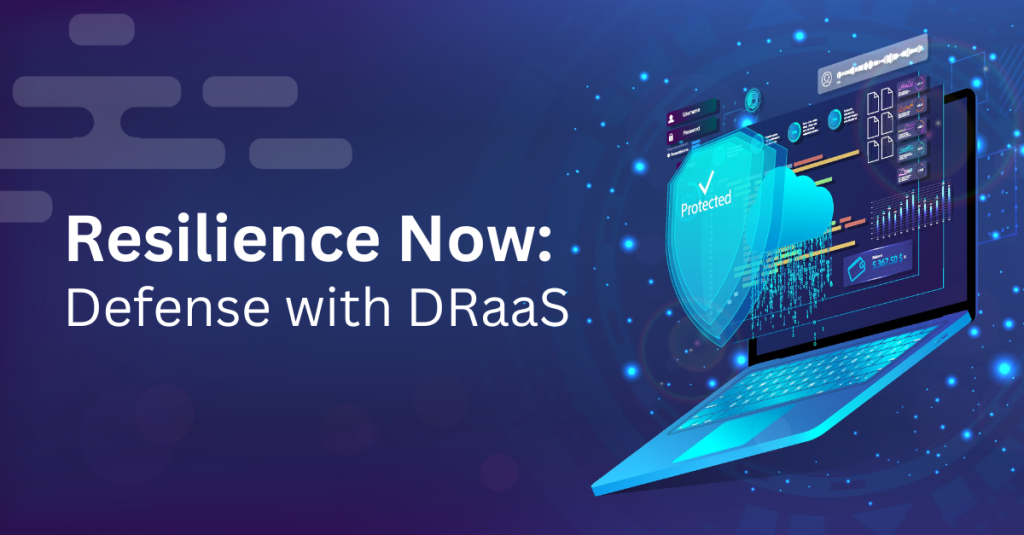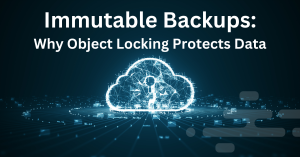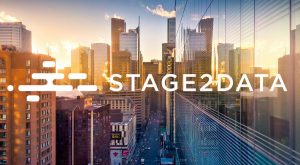You’ve probably seen headlines about high-profile cyberattacks that cripple companies overnight. Although not crippled, the recent X outage is an example of such a high-profile attack. Hacker group Dark Storm claimed it was behind the attack and has previously targeted Israeli hospitals and US airports. This highlights the sudden and disruptive nature of cyber incidents, a reality that can hit any organization, large or small.
One day, you’re running routine operations, and the next day, your employees can’t access vital systems. The frustrating part is that even a quick intrusion can leave deep damage—ransomware might lock your files, phishing attempts may compromise your financial data, or insiders could sabotage backups. Meanwhile, your customers and partners expect reliability. When your services go down, they want reassurance that you have a plan to recover.
That’s where Disaster Recovery-as-a-Service (DRaaS) can make the difference. For years, it was a behind-the-scenes function that focused on handling fire or flood scenarios. Now, it’s an indispensable part of a solid cybersecurity strategy. You’re facing a constant need to protect your business from digital threats, and you want a safety net that won’t break under pressure. DRaaS offers that safety net by giving you swift data restoration options and the power to keep operating when cyberattacks strike. It’s more than a backup plan—it’s an all-hands-on-deck approach to resilience.
DRaaS and Cybersecurity – A Powerful Combination
Let’s start with a quick definition: DRaaS means you rely on a cloud provider to replicate and host your critical systems, then fail over to that environment if your primary systems become unavailable. The provider takes charge of spinning up your servers, data, and applications in a secure setting until you’re ready to switch back.
At first, organizations focused on DRaaS to handle physical calamities. A pipe burst in your server room or a local power outage spelled trouble, and DRaaS got you back on track. Today, digital threats have grown more sophisticated, so you need the same protective approach to handle ransomware, unauthorized data access, and everything in between.
By weaving DRaaS into your cybersecurity plan, you set yourself up for business continuity. A robust security perimeter will block most intrusions, but no defence is perfect. When an attacker does get through, you want a fallback option that cuts downtime as much as possible. DRaaS excels at this: once your security team detects a breach or a ransomware infection, you can transition to your failover environment in the cloud, then restore operations from a safe copy of your data.
It’s hard to overstate how impactful that can be. Worldwide cybercrime costs are estimated to hit $10.5 trillion by the end of this year, emphasizing the need for enhanced cybersecurity measures. A single day offline due to a cyberattack translates to lost revenue, customer dissatisfaction, and possibly compliance issues if sensitive information becomes exposed. DRaaS puts you back online faster, which helps you preserve trust and avoid significant financial damage.
Common threats like ransomware become easier to handle with DRaaS. When a malicious actor encrypts your production files and demands a big payment, you can restore an uncorrupted version instead of forking over funds. The same goes for data breaches. If your security team finds signs of unauthorized access, you can spin up a clean environment in a separate, protected space. That type of agility gives you a credible way to keep your business running with minimal interruption.
How DRaaS Helps Mitigate Cyberattacks
Rapid Data Restoration
Ransomware groups depend on creating panic. They want you to see everything locked up so you’ll pay a ransom quickly. With DRaaS, you remove their bargaining chip by restoring data from a secure copy. You’re not racing against the clock or negotiating on the attacker’s terms. Instead, you redirect your focus toward a tested recovery workflow that’s already prepared for this scenario.
At the heart of DRaaS lies real-time data replication, which creates continuous copies of critical systems and stores them in secure cloud environments. This process ensures that the recovery point objective (RPO) – the maximum acceptable data loss—is measured in minutes rather than hours. That means employees resume their tasks quickly, and your daily operations keep going. You avoid the worst-case scenario of extended downtime – nobody wants to see headlines about your company shutting its doors because your systems stayed offline too long.
Immutable Backups
Immutable backups further bolsters your security by preventing unauthorized alterations. For example, our technology partner Zerto’s cyber recovery solutions use write-once-read-many (WORM) storage, ensuring backups cannot be modified or deleted by ransomware during an attack. This feature is critical, as 68% of ransomware incidents in 2024 targeted backup systems to maximize disruption. By combining real-time replication with immutability, DRaaS eliminates single points of failure and ensures data integrity under siege.
Failover Environments for Business Continuity
Failover is when you switch from your primary systems to backup systems in response to an event like a cyberattack. If you only rely on local recovery methods, you risk losing precious time. Maybe you have to reinstall hardware or run manual reconfiguration steps. With DRaaS, the environment is standing by, ready to launch. You don’t babysit a complicated restore process.
Failover also has value for incidents that aren’t purely malicious. Your network could suffer an extended outage or hardware failure, or weather events might interrupt on-site power. Since DRaaS focuses on a remote cloud-based platform, your hosted systems will stay online even when your local infrastructure is offline. You can let your team fix the production servers without forcing the entire business to wait.
Essential Security Features in DRaaS Solutions
That said, not all DRaaS offerings deliver the same level of protection. You want to make sure you’re getting strong security, not just quick recovery. Three features stand out for anyone investing in DRaaS:
1. Encryption (in-transit and at-rest)
Encryption is one of your strongest tools against unauthorized access. When your data travels from your on-premises site to the cloud, encryption keeps it unreadable by eavesdroppers. The same principle applies to storage in the cloud. That copy of your data should remain encrypted so that even if an attacker gained access to the underlying infrastructure, they couldn’t decipher your information.
You might see references to different encryption algorithms (for instance, AES-256). The key point is that your DRaaS provider needs to follow modern practices that meet accepted industry standards. You also want to confirm that you retain control of encryption keys or at least have a transparent key management process.
2. Intrusion Detection
DRaaS should do more than store data. It needs proactive threat monitoring to detect suspicious activity. This could involve intrusion detection systems scanning for unusual behavior in network traffic or unauthorized logins during replication. If something triggers a red flag, the DRaaS platform can alert you or even isolate suspicious changes before they spread.
Imagine an attacker attempts to corrupt your backup data so you can’t recover from an intrusion. Intrusion detection in the DRaaS environment might spot malicious file modifications or alert your team that someone is trying to gain improper privileges. While your local security tools focus on your production network, your DRaaS platform can extend that vigilance to your backups.
3. Immutable Backups
Immutable backups act like snapshots frozen in time. Once you create them, they cannot be altered or deleted before their set retention date. This matters because some modern cyberattacks attempt to delete or encrypt backups so you lose your safety net. If a backup is immutable, nobody — including administrators with high-level permissions—can modify it once it’s locked.
This is particularly helpful against ransomware. Attackers thrive on removing your fallback. If you have multiple immutable backups stored in secure cloud environments, it’s nearly impossible for the attacker to sabotage all of them. You’re in a position to restore untainted data instead of paying a ransom.
By incorporating these features, a DRaaS solution becomes more than a place to hold data. It turns into an extension of your cybersecurity perimeter. You’re gaining encryption for confidentiality, intrusion detection for early threat alerts, and immutable backups that keep your copies off-limits from tampering.
Selecting a DRaaS Provider – Security Features to Look For
When it’s time to choose a DRaaS partner, security should sit at the top of your checklist. Sure, recovery times are important, but you also want a provider with proven security methods. Here’s a brief set of questions you can use:
- What encryption standards do they use?
Confirm you’re getting modern encryption (for example, AES-256) for data in transit and data at rest. Ask how encryption keys are created and protected. - How do they handle intrusion detection?
Find out if they have automated systems that look for suspicious changes or network activity. Ask if they run routine tests or simulations. - Do they support immutable backups?
Ask if you can store point-in-time snapshots that cannot be modified or removed early. Request details on how they handle retention periods. - How frequently do they test recovery procedures?
You want regular testing to confirm that failover processes work as expected. Recovery is not something you should guess about when an attack has already started. - Are they compliant with relevant regulations?
Check if they align with data protection rules for your region or industry. If your organization has to follow strict data handling requirements, you want proof that the DRaaS provider can meet them.
A good DRaaS vendor will be transparent about how it protects data and manages failovers. You shouldn’t feel like you’re pulling teeth to get security information. Look for red flags such as vague or incomplete answers. If they can’t confirm encryption details or show examples of intrusion detection in action, it might be time to look elsewhere.
Final Thoughts
You face a growing set of threats that can exploit weaknesses in your systems at any time. Firewalls and antivirus solutions are essential, but they don’t fully address the damage that occurs once an intruder slips through. You need a reliable response plan that gets you back up and running without panic. That’s the real advantage of DRaaS in the modern cybersecurity mix.
A well-chosen DRaaS solution goes well beyond routine disaster recovery. It works hand in hand with your existing defences to give you immediate pathways to maintain operations. It helps your team shake off ransomware attacks by rolling back to safe copies. It blocks stealthy attempts to destroy backups through immutable storage. It also keeps a watchful eye out for unusual activity in your failover environment. Together, these capabilities make DRaaS a vital piece of any strategy that aims to keep your business safe and online.
You don’t have to settle for complex, confusing processes or outdated tapes. You can pick a DRaaS provider that delivers strong encryption, intrusion detection, and immutable backups, all designed to fit smoothly into your daily operations. Once you do, you’ll have a powerful safety net that works alongside your security tools. You’ll feel more confident when faced with threats because you’ll know you have a tested way to restore data and keep your company open for business.
If you’ve been questioning whether to add DRaaS or upgrade your current plan, now might be the right time. Cyberattacks aren’t showing any sign of slowing, and business continuity has taken on new levels of importance. DRaaS helps you stay ready for whatever comes next—without losing control of your processes or your budget. You deserve a solution that keeps your data accessible, your reputation intact, and your operations running. That’s what DRaaS, backed by strong cybersecurity measures, provides.
Join the Stage2Data Partner Program
The DRaaS market is growing fast, and MSPs have an incredible opportunity to lead the way. Partnering with Stage2Data means offering your clients more than just disaster recovery. It means giving them better value, service, and peace of mind—all while growing your own business.
Getting started is easy. Our team will guide you through the process, from initial setup to training and beyond. You’ll have access to the tools and support you need to succeed, all without the red tape that comes with larger providers.
Stage2Data Technology Partners
If you found this post interesting, you might enjoy these too:
Lorem ipsum dolor sit amet, consectetur adipiscing elit. Ut elit tellus, luctus nec ullamcorper mattis, pulvinar dapibus leo.






